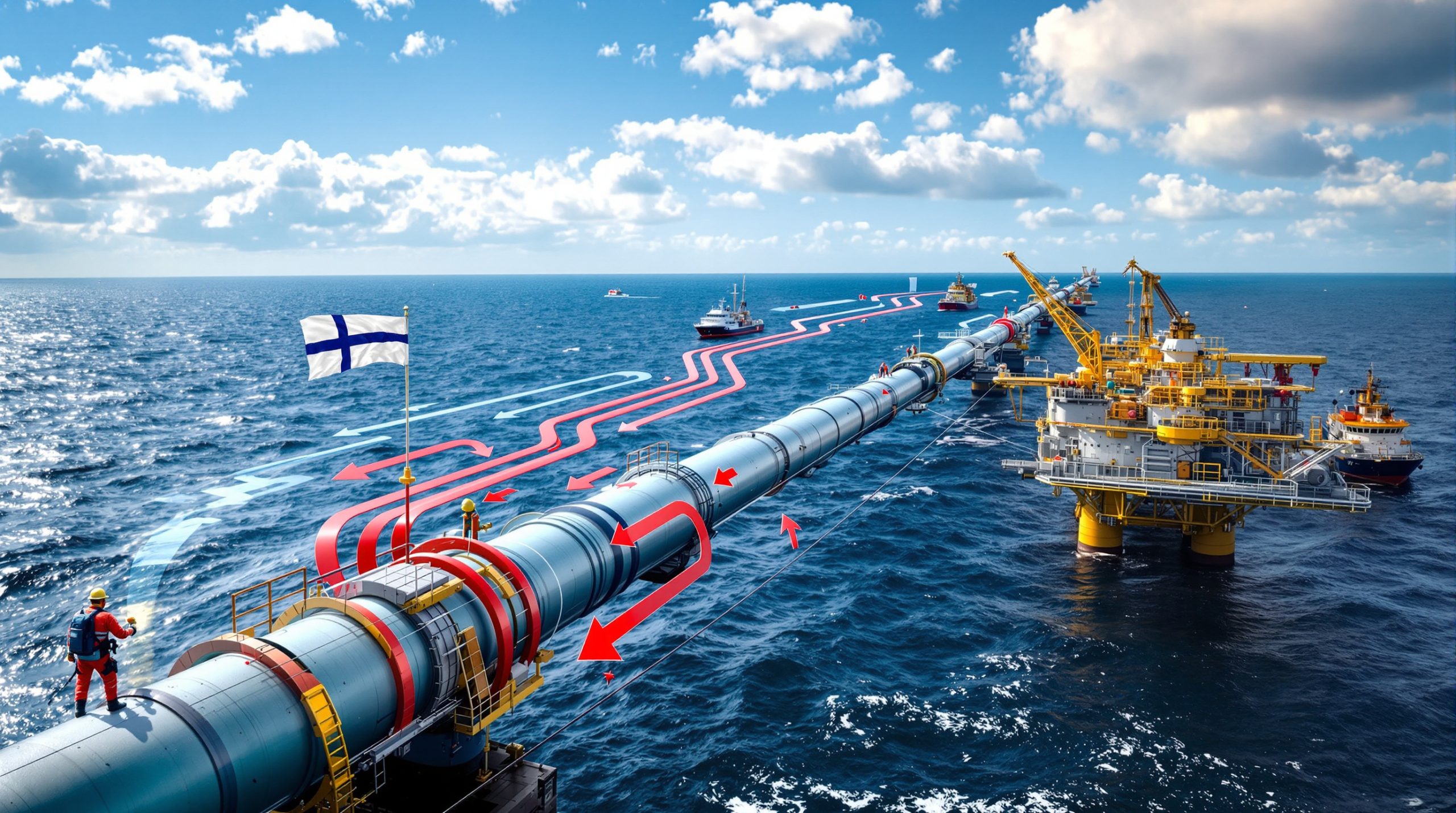Why Is China Facing Copper Production Challenges?
China's copper smelting industry stands at a critical crossroads, caught between persistent raw material shortages and increasing government scrutiny over industrial overcapacity. Despite challenging market fundamentals, Chinese smelters have maintained remarkably high production levels throughout early 2025, but this expansion appears increasingly unsustainable as feedstock constraints worsen.
Chinese copper refiners, who collectively account for over 50% of global refined copper production, have achieved consecutive monthly production records in the first half of 2025. However, this output expansion has occurred despite deteriorating market conditions, creating what industry experts describe as an "increasingly untenable situation."
"The economics of smelting have been crushed by shortages of both mined ore, which is turned into concentrate, and its replacement feedstock, copper scrap," notes the Shanghai Metals Market (SMM) research team in their latest industry assessment.
According to the latest projections from SMM, August production is expected to reach approximately 1.168 million tons, representing a modest 0.5% decrease from July's peak levels. More significant declines are anticipated for September as scheduled maintenance work begins at several major facilities.
The Current State of Chinese Copper Production
China's dominance in global copper refining has continued to strengthen in recent years, with the country now producing more than half of the world's refined copper. This concentration of production capacity gives Chinese output trends outsized influence on global metal markets and pricing.
The first half of 2025 witnessed Chinese smelters achieving "a succession of record highs in recent months," according to industry data, with July marking the peak output level. What makes this expansion particularly remarkable is that it has occurred while "defying tight feedstock markets and cratering profitability" – a situation that appears increasingly difficult to maintain.
Port inventories of copper concentrate have fallen to approximately 560,000 tons, representing the lowest level recorded this year. This depletion of essential raw materials signals that production adjustments may be unavoidable in the coming months, regardless of strategic or economic priorities.
Key Production Metrics and Forecasts
The current production trajectory shows clear signs of approaching an inflection point:
- July 2025: Record high production levels (previous peak)
- August 2025: Projected 1.168 million tons (0.5% decrease from July) according to Shanghai Metals Market
- September 2025: Further decline expected as maintenance work begins at five major smelters
- Current concentrate stockpiles: Approximately 560,000 tons at Chinese ports (lowest level this year)
Analysts note that these figures likely indicate the beginning of a more significant production adjustment rather than a temporary pause. Official output figures for July will be released by China's statistics bureau on August 18, providing additional clarity on the extent of the production challenges.
How Are Raw Material Shortages Affecting Chinese Smelters?
The unprecedented expansion of Chinese smelting capacity has created a fundamental imbalance in the supply chain, with global copper supply forecast failing to keep pace with China's growing appetite for copper concentrate. This mismatch has resulted in critical feedstock shortages that threaten production sustainability.
SMM reports that dwindling port stockpiles are "forcing smelters to pare output" as they struggle to secure sufficient raw materials. The shortage extends beyond primary copper concentrate to include scrap copper, limiting options for maintaining production through alternative feedstocks.
"Some overseas rivals, which lack the state backing enjoyed by many Chinese operators, have already begun to curtail production," industry sources note, highlighting how Chinese smelters have thus far proven more resilient to challenging market conditions than their international counterparts.
Concentrate Supply Constraints
Port inventories of copper concentrate have declined to approximately 560,000 tons, representing yearly lows. This critical shortage creates operational challenges for smelters accustomed to maintaining higher buffer stocks.
Key factors contributing to the concentrate shortage include:
- Global mining production growth failing to match Chinese capacity expansion
- Logistical challenges affecting concentrate shipments
- Strategic withholding by some miners anticipating better terms
- Limited new mine projects reaching production stage
Treatment charges, the fees smelters charge miners to process copper concentrate, have "turned higher over the past month," according to the Bloomberg report. While this modest improvement suggests some production adjustments may be occurring, these charges remain "still deeply in the red" compared to historical averages.
Scrap Material Limitations
Alternative feedstock options remain severely limited as the global scrap copper market experiences its own supply constraints:
- Reduced availability: Consumer electronics recycling volumes have declined
- Quality challenges: Lower-grade scrap requires additional processing
- Import restrictions: Regulatory requirements limit certain scrap flows
- Price competition: Higher scrap premiums affect processing economics
The inability to supplement concentrate shortfalls with sufficient scrap material creates a compounding effect on production challenges, leaving smelters with few viable options beyond reducing output.
Maintenance Schedules Impact
The timing of scheduled maintenance work at major smelting facilities appears strategically aligned with raw material constraints:
- Five smelters with combined capacity of 900,000 tons are scheduled for September maintenance
- This coordinated timing suggests companies may be extending routine maintenance to address feedstock shortages
- Production cuts could potentially extend beyond scheduled maintenance periods if concentrate availability fails to improve
Industry analysts suggest that maintenance schedules provide a face-saving mechanism for production cuts that might otherwise be attributed solely to raw material shortages or poor economics.
What Is China's Government Doing About Industrial Overcapacity?
The Chinese government has significantly intensified efforts to address industrial overcapacity across multiple sectors, with growing indications that copper smelting may face increased scrutiny despite its strategic importance to the country's manufacturing base.
Government policy documents reflect "greater urgency among policymakers to fix the ruinous competition and overproduction driving deflationary pressures in the economy," according to industry sources. This broader economic concern could override the historical protection afforded to copper production.
Historical Precedents in Other Metals
China's approach to capacity management has varied significantly across different metals sectors:
- Aluminum: "Beijing imposed a capacity cap on aluminum smelters nearly a decade ago," establishing clear precedent for intervention in metal production
- Steel: The government "has been guiding steel output lower since 2020," demonstrating willingness to restrict production in strategically important sectors
- Copper: Historically, "the copper industry, deemed crucial to high-tech and green manufacturing, has faced fewer restrictions," but this preferential treatment appears increasingly tenuous
These precedents suggest that government intervention in copper smelting capacity, while not yet explicitly announced, remains a distinct possibility as broader industrial policy objectives evolve.
Current Policy Direction
Several indicators suggest a shifting policy landscape that could impact copper smelting operations:
- Increased emphasis on eliminating "ruinous competition" across multiple industrial sectors
- Growing concern about deflationary pressures resulting from industrial overproduction
- Potential expansion of capacity restrictions to previously protected sectors
- Statements from economic planning agencies highlighting the need for industrial consolidation
The timing of any potential policy changes remains uncertain, but industry participants are closely monitoring government communications for early signals of regulatory shifts.
Strategic Industry Considerations
Copper's critical role in several priority sectors provides some protection against severe capacity restrictions:
- Essential input for renewable energy infrastructure (solar, wind, grid storage)
- Critical component in electric vehicle production
- Strategic importance to high-tech manufacturing supply chains
- Alignment with China's "dual circulation" economic strategy
These strategic factors suggest that any potential government intervention would likely take a more targeted approach rather than implementing broad-based restrictions, potentially focusing on smaller, less efficient operations while protecting larger, more advanced smelters.
How Do Chinese Smelter Economics Compare Globally?
The financial dynamics of copper smelting differ significantly between Chinese operations and their international counterparts, explaining the divergent responses to current market challenges. While international smelters have begun implementing production cuts, many Chinese operators continue to run at high capacity despite severely compressed margins.
"Some overseas rivals, which lack the state backing enjoyed by many Chinese operators, have already begun to curtail production," industry sources note, highlighting a key competitive advantage for Chinese smelters during challenging market conditions.
Profitability Comparisons
Chinese smelters demonstrate greater resilience to poor market conditions due to several structural advantages:
| Factor | Chinese Smelters | International Smelters |
|---|---|---|
| State Support | Often significant | Generally limited |
| Vertical Integration | Frequently extends to downstream manufacturing | Typically more focused on smelting only |
| Scale Economies | Larger average capacity | More variable sizes |
| Financing Costs | Often subsidized | Market-based |
| Strategic Priorities | Market share and volume often prioritized | Profitability typically primary concern |
These differences create a situation where Chinese smelters can continue operating despite economic conditions that would force production cuts at many international competitors.
Treatment Charge Trends
Treatment charges (TCs) represent a critical indicator of smelter economics and the balance between concentrate supply and processing capacity:
- Recent data shows spot treatment fees have "turned higher over the past month," indicating initial production adjustments
- Despite modest improvement, charges remain "still deeply in the red" compared to historical averages
- The modest recovery suggests smelters "may have begun to better align their capacity with the availability of ore"
This gradual improvement in treatment charges, while insufficient to restore healthy margins, may indicate the beginning of a necessary market rebalancing process.
Competitive Advantages
Several structural factors provide Chinese smelters with resilience during challenging market conditions:
- Scale economies benefit larger Chinese operations, reducing per-unit production costs
- Vertical integration with downstream manufacturing creates value capture opportunities beyond smelting margins
- Government support mechanisms not available to international competitors provide financial cushioning
- Strategic positioning within China's industrial policy framework offers protections against purely market-driven decisions
These advantages explain why Chinese smelters have maintained high production levels despite deteriorating economics, though current feedstock shortages appear to be forcing adjustments that economic factors alone failed to trigger.
What Are The Global Market Implications?
Changes in Chinese copper production have far-reaching consequences for global metal markets, affecting everything from price dynamics to investment decisions. The potential production adjustments signaled by recent data could initiate significant market rebalancing after months of supply growth despite weakening demand.
Price Impact Potential
Production cuts in China could provide meaningful price support in a market that has struggled with weak sentiment:
- Reduced supply would help address current market oversupply conditions
- Psychological impact of Chinese production cuts could change market sentiment
- Rebalancing would likely unfold gradually rather than triggering sudden price movements
- Regional price differentials could shift as metal flows adjust to changing production patterns
Analysts note that the timing and scale of production adjustments will determine their market impact, with coordinated or extended cuts likely to have more significant price effects than temporary or isolated reductions.
Supply Chain Considerations
Downstream manufacturers face potential adjustments as Chinese production patterns shift:
- Metal availability could tighten for certain products or in specific regions
- Premium structures may evolve as supply-demand balances change
- Strategic stockpiling might increase amid uncertainty about future supply
- Procurement strategies may require adjustment to account for changing market dynamics
The integrated nature of global copper supply chains means that production changes in China will ripple through multiple industries and regions, requiring adaptation from market participants.
Investment Implications
The evolving production landscape creates both challenges and opportunities for investors:
- Mining companies supplying Chinese smelters may face changing demand patterns
- Non-Chinese smelting operations could benefit from reduced competitive pressure
- Market fundamentals may require reassessment as production adjustments unfold
- Strategic metal stockpiles could see valuation impacts from changing market dynamics
Investors will likely monitor official production data and policy signals closely for indications of how deeply and persistently Chinese production might be affected. For those interested in unlocking copper investments, these developments warrant close attention.
When Will Official Production Data Confirm These Trends?
Market participants are awaiting official confirmation of production trends, with several key data releases expected in the coming weeks and months. These figures will provide essential context for assessing the scale and duration of potential production adjustments.
Upcoming Data Releases
Several critical data points will help clarify the evolving production situation:
- August 18, 2025: "Official output figures for July are due for release by the statistics bureau," providing verification of the reported production peak
- September statistics will provide the first concrete measurement of maintenance impacts
- Quarterly production reports from major smelters expected in October will offer deeper insight into operational strategies
These official figures will help distinguish between temporary fluctuations and more significant structural shifts in Chinese copper production.
Leading Indicators to Watch
Several early indicators may signal production trends before official data confirms them:
- Port inventory levels of copper concentrate provide real-time insight into raw material availability
- Spot treatment charge movements reflect the balance between concentrate supply and smelter demand
- Shipping data for concentrate imports indicates future production potential
- Regional price premiums can signal changing supply-demand dynamics
Industry analysts recommend monitoring these indicators collectively rather than in isolation, as they provide complementary perspectives on market dynamics.
How Might Chinese Copper Production Evolve Through 2025-2026?
The trajectory of Chinese copper production will depend on multiple interrelated factors, including feedstock availability, government policy, economic conditions, and strategic priorities. While immediate production adjustments appear increasingly likely, the medium-term outlook remains more uncertain.
Short-Term Outlook (Remainder of 2025)
The remainder of 2025 appears likely to see some production moderation:
- Maintenance-driven production declines in September, with five smelters representing 900,000 tons of capacity scheduled for work
- Potential extension of output cuts if concentrate stockpiles remain at historically low levels
- Gradual improvement in treatment charges if production adjustments better align with available feedstock
- Seasonal demand patterns potentially influencing production decisions in Q4
The extent and duration of these adjustments will depend largely on how quickly concentrate supply can be increased or alternative feedstocks secured.
Medium-Term Considerations (2026)
Several factors will shape production trends into 2026:
- Government policy direction regarding industrial capacity and environmental standards
- New mining projects coming online globally to address concentrate shortages
- Evolution of treatment charges and overall smelting profitability
- Strategic positioning of copper within China's industrial policy framework
The interplay between these factors will determine whether 2025's production challenges represent a temporary adjustment or the beginning of a more significant structural shift. Recent copper price insights suggest that market participants are carefully weighing these possibilities.
Structural Shifts
Beyond cyclical factors, several potential structural changes could reshape Chinese copper production:
- Rationalization of smaller, less efficient smelters through consolidation or closure
- Shift toward higher-value copper products rather than volume-focused growth
- Integration with China's broader industrial policy objectives, particularly regarding green manufacturing
- Greater emphasis on securing stable raw material supply through overseas investment
These longer-term trends may ultimately prove more significant than short-term production adjustments in determining the future of Chinese copper refining.
FAQ: Chinese Copper Production Challenges
What percentage of global copper is refined in China?
China accounts for more than 50% of global refined copper production, making it by far the largest producer worldwide. This dominant position means that even modest percentage changes in Chinese output can significantly impact global supply balances and market dynamics.
Why haven't Chinese smelters reduced production earlier despite poor economics?
Chinese smelters have continued high production levels despite poor economics due to several factors:
- State backing for many operators provides financial cushioning
- Strategic importance of maintaining market share and supply chain presence
- Contractual obligations to downstream customers
- High fixed costs and technical challenges associated with stopping and restarting production processes
- Historical expectations of government support during challenging market conditions
These factors created a situation where production continued despite economic conditions that would typically force adjustments, though raw material shortages now appear to be triggering unavoidable changes.
How do copper concentrate shortages affect smelter operations?
Concentrate shortages impact smelter operations in several critical ways:
- Force operations below optimal capacity, increasing per-unit production costs
- Create technical challenges as feed consistency becomes more variable
- Require potentially costly adjustments to production processes
- Limit ability to optimize metal recovery and manage impurities
- Necessitate either production cuts or reliance on alternative feedstocks with different processing requirements
Without sufficient feedstock, even the most efficiently operated smelters face unavoidable operational and economic challenges.
What are treatment charges and why are they important?
Treatment charges (TCs) are fees that smelters charge miners to process copper concentrate into refined metal. They serve as a critical indicator of market conditions:
- Rising TCs indicate abundant concentrate supply relative to smelting capacity
- Falling TCs suggest tight concentrate markets and competition among smelters for raw materials
- TC levels directly impact smelter profitability and operational decisions
- Recent slight increases in spot TCs suggest initial production adjustments may be occurring
The recent trend of treatment charges having "turned higher over the past month" indicates that smelters "may have begun to better align their capacity with the availability of ore," though these charges remain "still deeply in the red" compared to historical averages.
How does China's approach to copper capacity differ from other metals?
The Chinese government has historically treated copper smelting capacity differently from other metals sectors:
- Aluminum has faced a formal capacity cap for nearly a decade
- Steel production has been subject to output guidance since 2020
- Copper, in contrast, has "faced fewer restrictions" due to its strategic importance to high-tech and green manufacturing
This preferential treatment reflects copper's central role in
Seeking Early Alerts on the Next Major Mineral Discovery?
Discovery Alert's proprietary Discovery IQ model delivers instant notifications on significant ASX mineral discoveries, empowering investors to identify actionable opportunities before the broader market. Explore why historic discoveries can generate substantial returns by visiting the Discovery Alert discoveries page and secure your market-leading advantage with a 30-day free trial.




